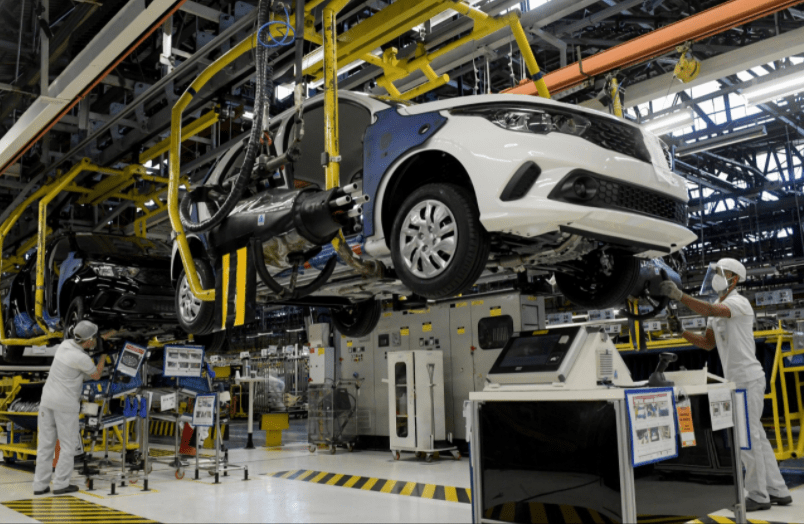Mexico culminated its boom in automotive product exports by registering a 4% year-on-year drop in the first half of 2025.
The setback caused these sales to fall to 91.368 billion dollars, according to data from the Ministry of Economy.
In this industry, Mexican exports include automobiles, vehicles for the transportation of goods, tractor-trailers, buses, auto parts, ATVs and special vehicles, among others.
Automotive product exports
Mexico is home to major exporters in the automotive sector. General Motors, Volkswagen, Nissan, Ford and Toyota operate plants in key states such as Guanajuato, Puebla and Aguascalientes. In addition, auto parts companies such as Bosch, Continental, ZF and Magna supply global chains from Mexico.
Mexico is a key player in the global automotive industry due to its strategic location, extensive network of trade agreements, skilled labor and competitive costs. In addition, it has a solid industrial infrastructure and is deeply integrated into North American supply chains.
Below is the value of automotive products exported by Mexico in the first half of each year, in millions of dollars, and their year-on-year growth rates:
- 2018: 68,309 (+12.4 percent).
- 2019: 72,575 (+6.2 percent).
- 2020: 47,467 (-34.6 percent).
- 2021: 70,249 (+48.0 percent).
- 2022: 78,299 (+11.5 percent).
- 2023: 89,403 (+14.2 percent).
- 2024: 95,215 (+6.5 percent).
- 2025: 91,368 (-4.0 percent).
Automotive industry projections
Automakers are under pressure. They face tariffs, falling sales of electric vehicles, and shortages of inputs. Added to this is the fierce competition from Chinese firms and a race to dominate software. All of this is forcing a rethinking of the sector’s global strategies.
According to a report by AlixPartners, sales will grow just 1% in 2025. The momentum will come from Asia, with China leading the way. On the other hand, Europe and the United States will lose share. Chinese brands are making strong inroads in Europe, while European suppliers are cutting assets and closing factories.
The advanced mobility revolution marks a decisive change. ADAS systems are growing faster than traditional vehicles. According to the same report, this market will reach a value of $50 billion by 2030, driven by demand for safer and more automated driving.
In addition, artificial intelligence is becoming essential. AI-based solutions enable manufacturers and suppliers to reduce development times and verification costs by up to 20%. This improves efficiency and accelerates innovation in an increasingly competitive automotive environment.

